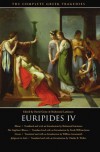Currently reading
Growing Up , by Higuchi Ichiyo

Higuchi Ichiyo (1872-1896), whom Donald Keene termed the "principal woman novelist of the Meiji period," wrote the novella Takekurabe (given both "Growing Up" and "Child's Play" as titles in English(*)) in the final year of her lamentably brief life, struck down by tuberculosis. Despite her necessarily small output, Ichiyo is an influential figure in Japanese literature.
The story is set in Daionji, a run down district of Tokyo in which live the maids, seamstresses, doormen, rickshaw pullers and bouncers of the Yoshiwara, the red light district of Tokugawa and Meiji Japan, just outside of the moat surrounding the Yoshiwara. Two rival bands of 12-15 year olds from this district and Midori, the younger sister of a prosperous geisha, are the focus of the text.
What a vivid and convincing story this little text delivers! And the characters: the bold 13 year old Midori tossing away her schoolbooks and dreaming of following her sister into the apparent glamor and comfort across the moat; the charismatic 12 year old Shota, grandson of the moneylender and leader of the dominant gang; the strong and foolish 15 year old Chokichi, leader of the rival gang who believes that without violence his followers would fall away from him; Nobu, the son of the local Zen priest and destined to follow him, in love with Midori and drawn to the underdog Chokichi; the simple, open hearted Sangoro, torn between the two gangs and trying to get along by playing the clown. Among others.
All the characters are clearly drawn, dramatic tension is built, and the setting on both sides of the moat is summoned lifelike before the reader's eyes. This is a triumph of 19th century literature.
An alluring excerpt (recall that at one time Buddhist priests were forbidden to eat fish or to marry):
'So did I hear it spoken,' the sutra began. It was the august temple, and the chanting voice borne on the soft pine breeze should have cleaned the dust from one's heart.
Smoke rose from the roasting fish in the kitchen, and diapers had on occasion been seen drying on the tombstones. Nothing one could point to as violating the discipline, indeed, and yet those who would make of the clergy so many sticks of wood might have found here signs of a turn too fleshy. The body of the reverend priest had filled out with his fortune. His stomach was a thing of beauty. And where could one find words to praise the luster of his complexion? Not the pale pink of the cherry blossom, nor yet the deeper pink of the peach. A fine coppery glow from the top of his shaven head down over his face to his neck, never a spot to mar it. When he raised his thick eyebrows, somewhat grizzled now, and broke into that laugh of his, one was a little uneasy lest Buddha in the main hall start up in surprise and tumble from his stand.
I wonder how she was able to produce such a beautifully accomplished text at such a young age. When I first read this novella 30 years ago, I had no chance to find an answer to that question, or to find translations of more of her work. That has changed in the meanwhile - there are now a few books available in English, French and German which I shall be looking into...
(*) Takekurabe has been translated into English by Edward Seidensticker in Donald Keene's Modern Japanese Literature and by Robert Danly in his In the Shade of Spring Leaves: The Life and Writings of Higuchi Ichiyō.
 3
3












